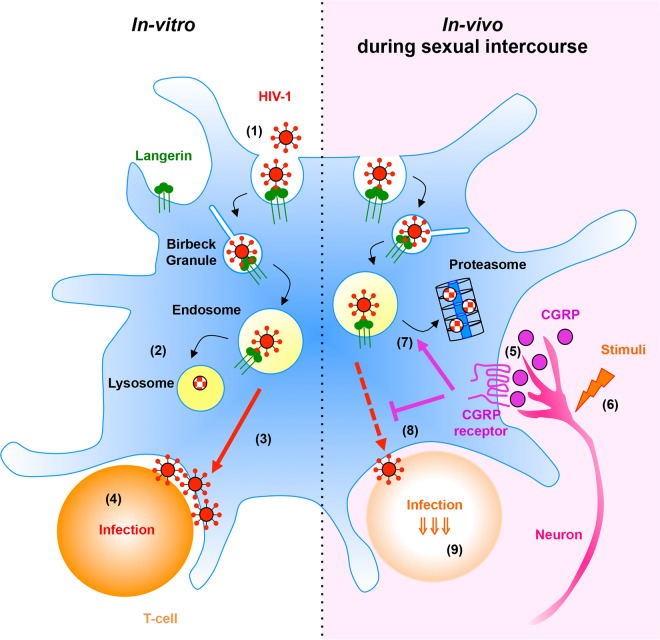FIG 5.
Summary of HIV-1 degradation pathways in LCs. (Left) In untreated LCs in vitro, HIV-1 binding to langerin induces viral internalization (1) and trafficking along the endolysosomal pathway, resulting in viral degradation in endolysosomes (2). Infectious virions escaping degradation subsequently trans-infect CD4+ T cells (3) and induce productive T-cell infection (4). (Right) Within mucosal tissues in vivo, CGRP secreted from peripheral neurons (5), either as part of the sexual response or following potential mechanical/thermal stimuli (6), binds its receptor expressed by LCs. This interaction directs HIV-1 from endolysosomes toward the proteasome (7). As proteasomal HIV-1 degradation is faster and more efficient, fewer infectious virions are available to trans-infect CD4+ T cells, resulting in significant CGRP-induced inhibition of first-phase trans-infection (8) and ensuing T-cell productive infection (9).

